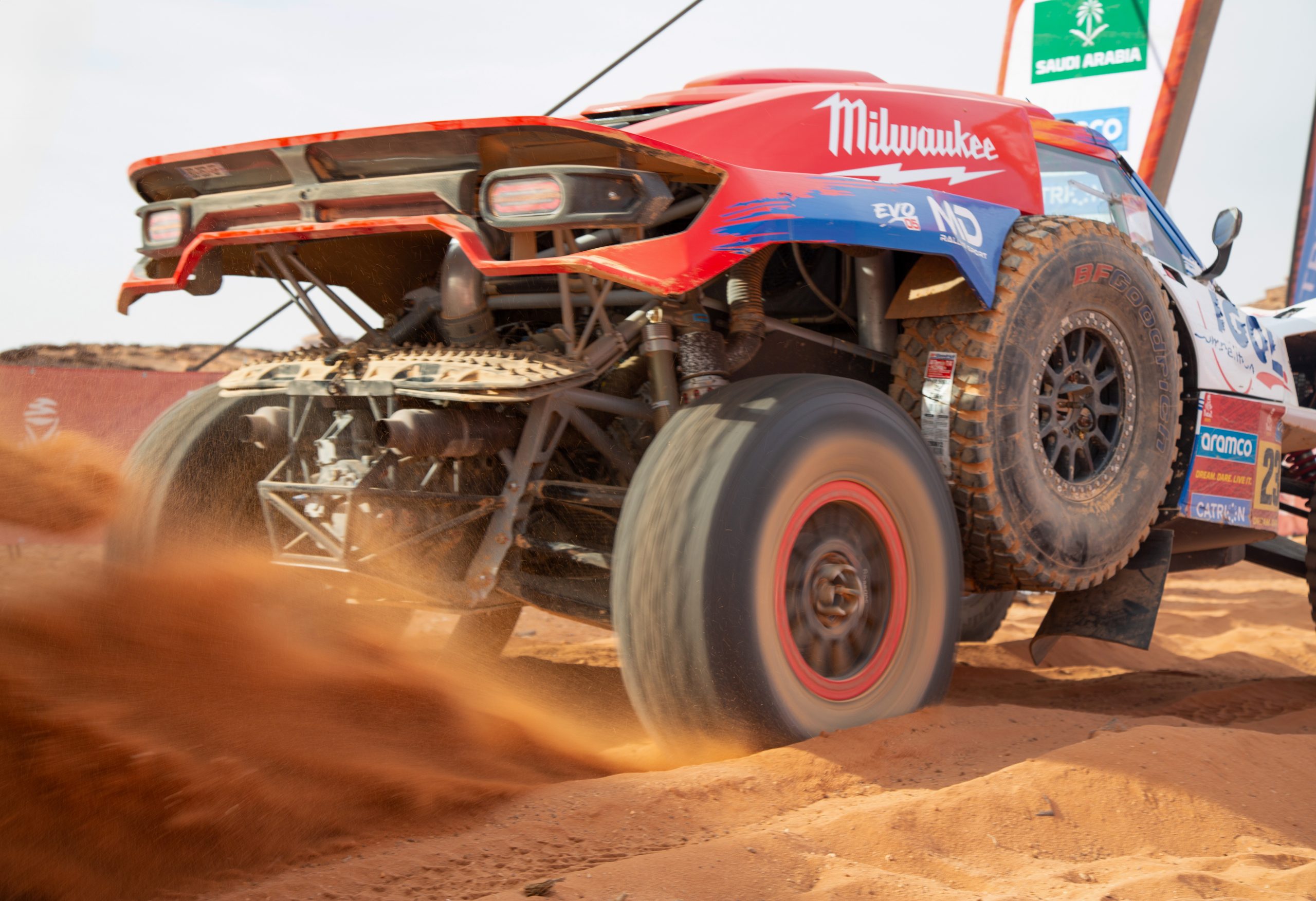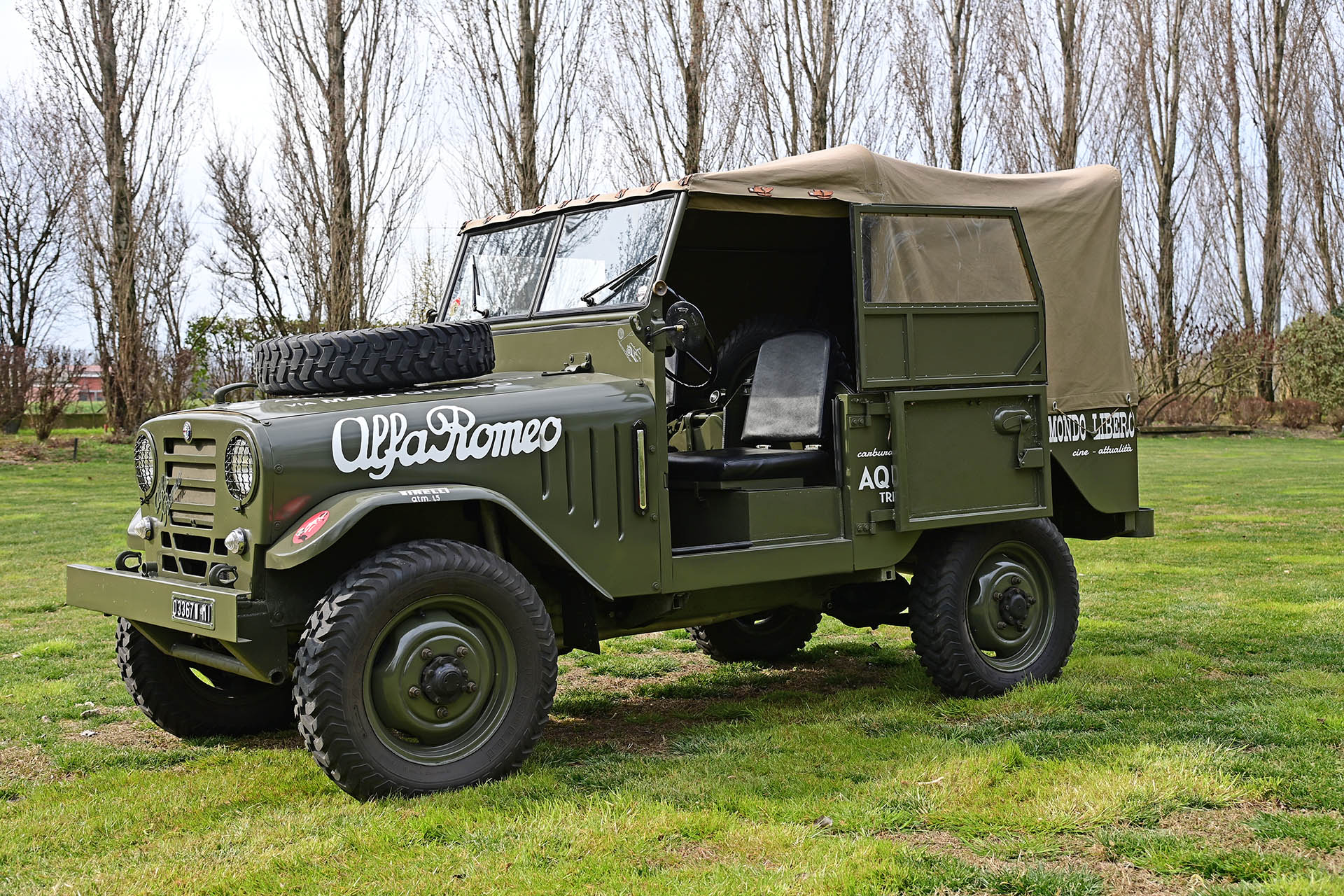Land Rover has opened up off-road excursions and overland explorations to even more adventurers by adding 340mm and three extra seats to the Defender.
As you can see from the images, all the extra length is behind the rear axle. Where the five-door 110 model has almost no overhang the new 130 is all about that boot(y). Land Rover designers have sculpted it carefully, however, giving it a “subtle boat tail-style uplift” which should mean the car’s go-anywhere ability is unaffected.

As a result, off-road geeks can boast of a 28.5-degree departure angle, 430mm of axle articulation, and a 900mm wading depth. Electronic air suspension can raise the ride height by up to 73.5mm to overcome even tougher obstacles. Said obstacles have been little… well, obstacle to the existing 110, and with the same wheelbase and breakover angle as the 110, that shouldn’t change on the 130.
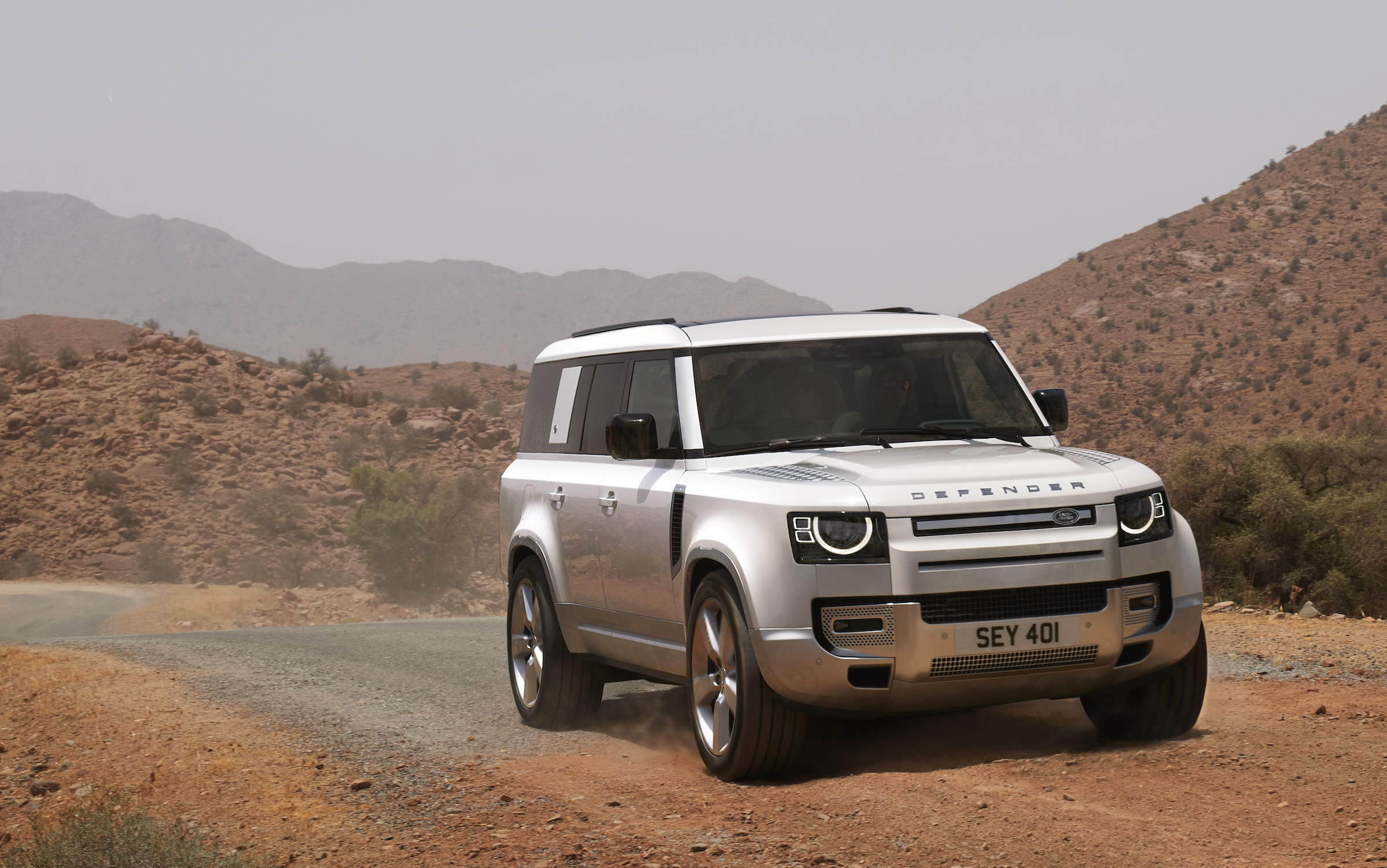
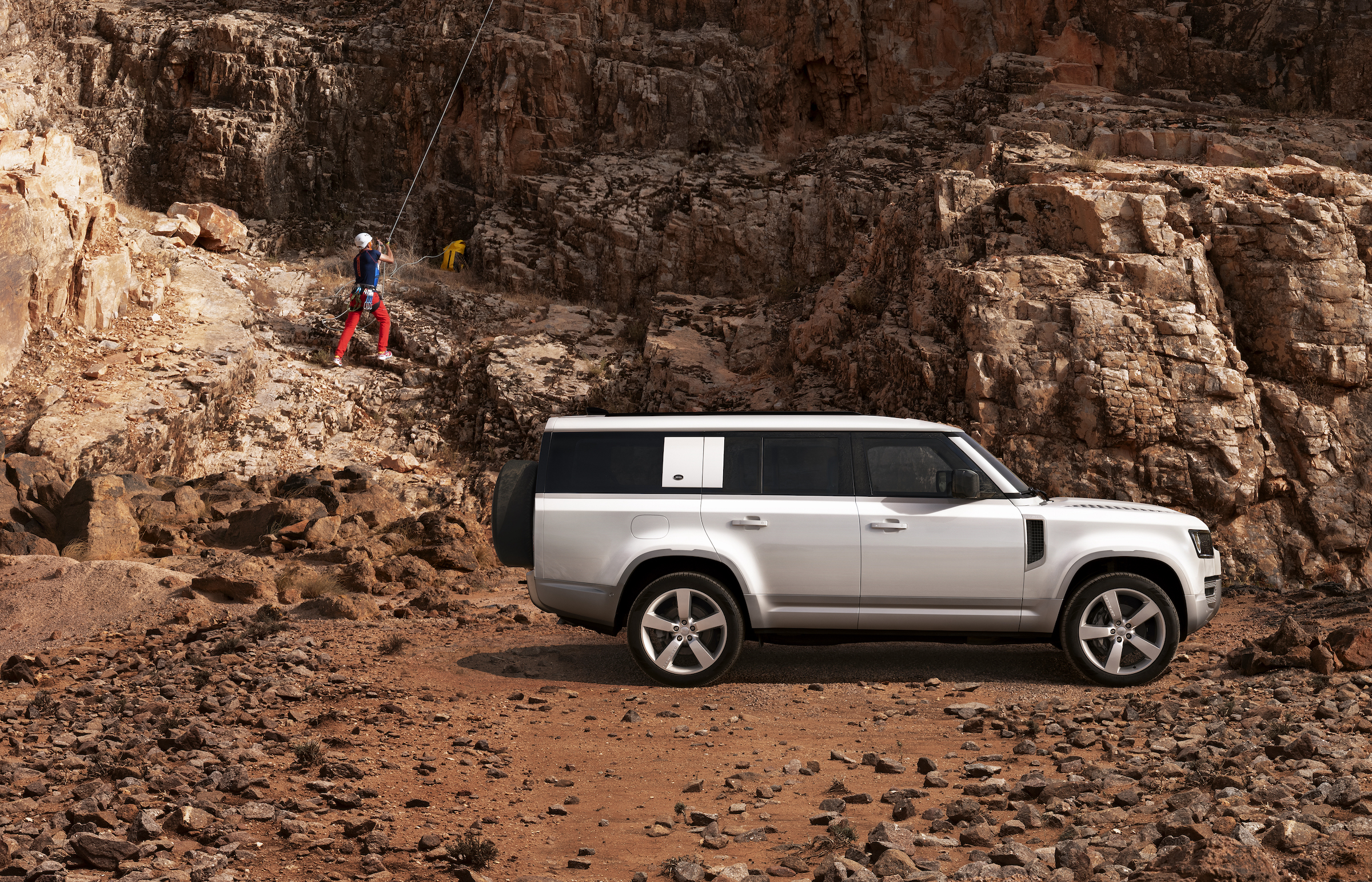
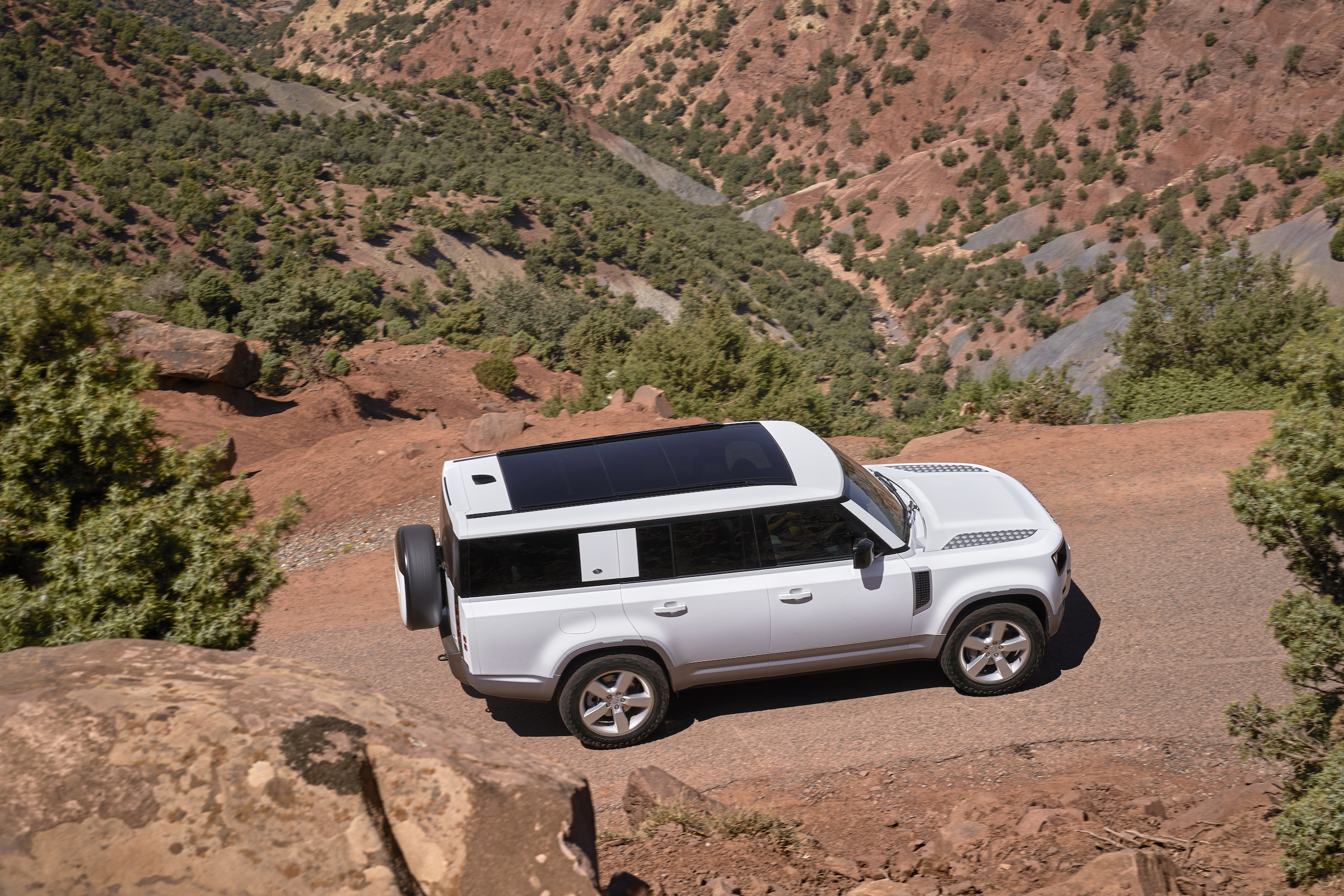
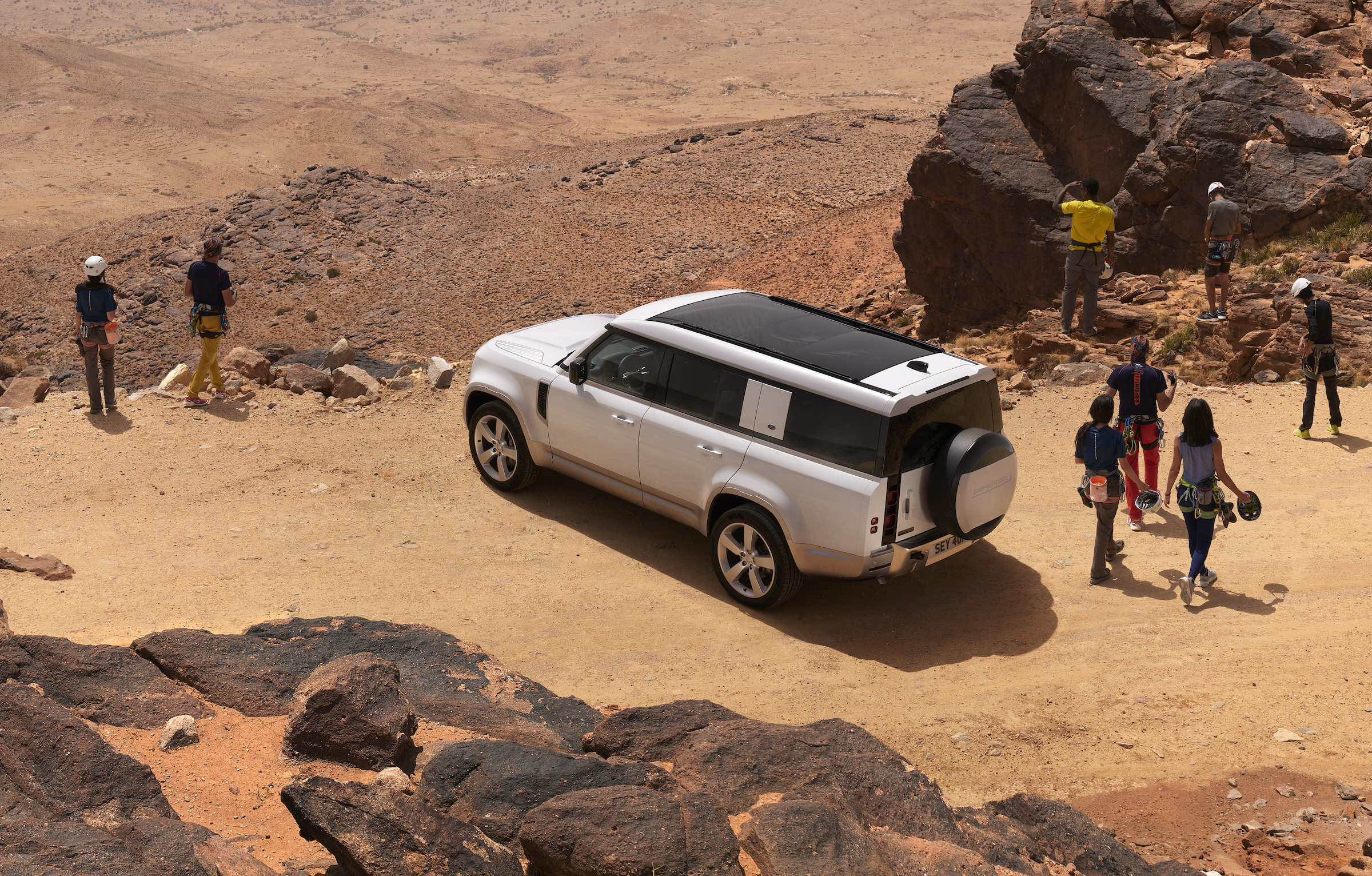
Trickier to navigate might be the extensive range of packs, paints and options offered. There’s an all-new Sedona Red hue that’s exclusive to the 130 (reminiscent, perhaps, of the red on old farm-spec Landie 110s), and the choice of Explorer, Adventure, Country and Urban accessory packs, and an Extended Bright Pack to give a satin finish to the lower body panels.
Seating is in a 2-3-3 arrangement, meaning the front jump seat isn’t available on the Defender 130, but the two rear rows offer generous leg and headroom, each row having a small “stadium rise” for improved visibility, and with the additional bonus of a second sunroof to let in light. Every row has its own ventilation with a four-zone climate control system, while a two-row variant is also available.
A new natural light oak engineered wood veneer is available to complement the light oyster leather seats. Tan leather is also available, as is a rugged Robustec fabric. Even with all three rows in place the Defender 130 offers a capacious 389 litres of cargo space, which rises to a massive van-like 2516 litres if rows two and three are folded away in the five-seat variant. Loading is made easier by lowering the air suspension.
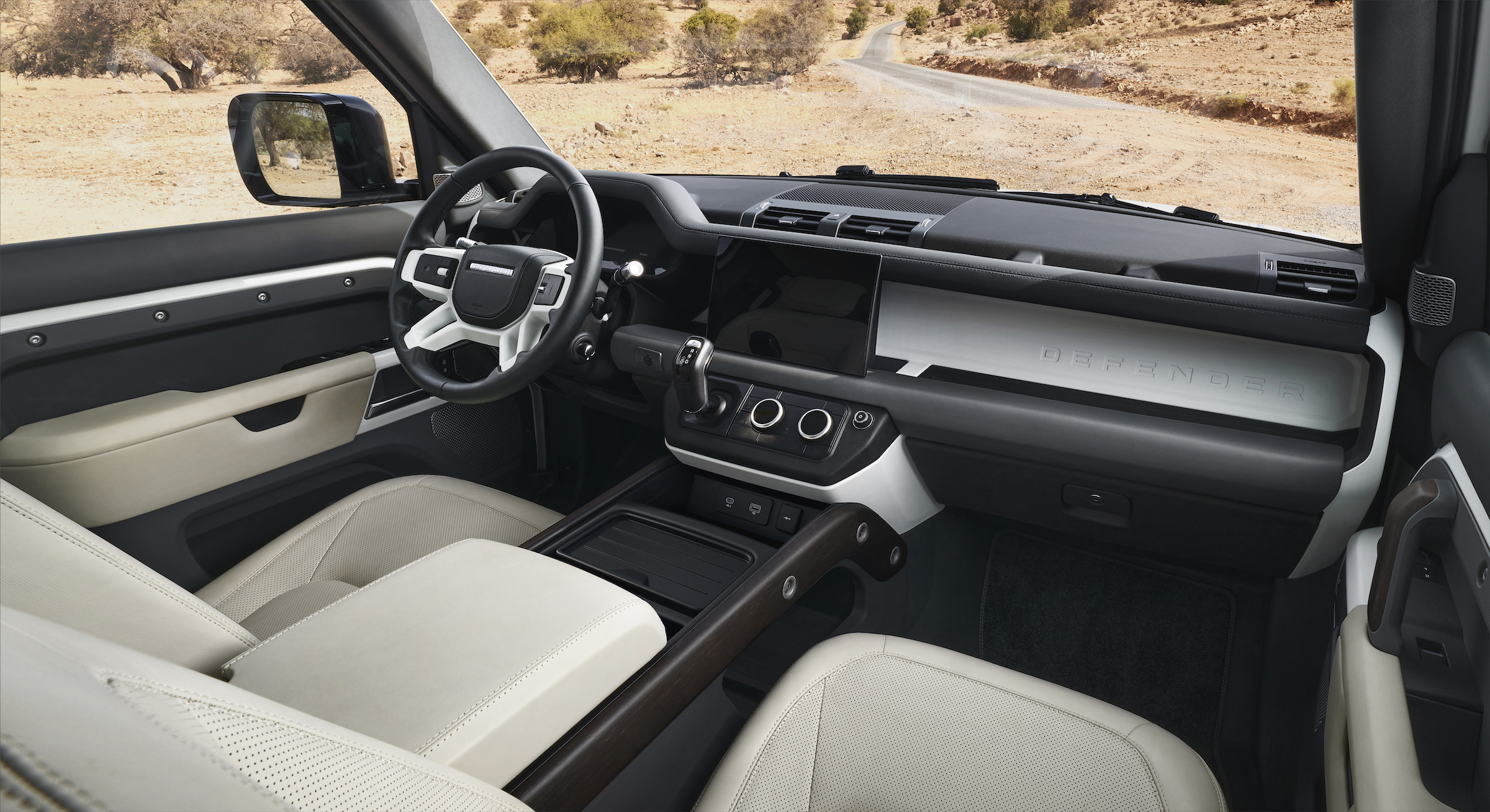
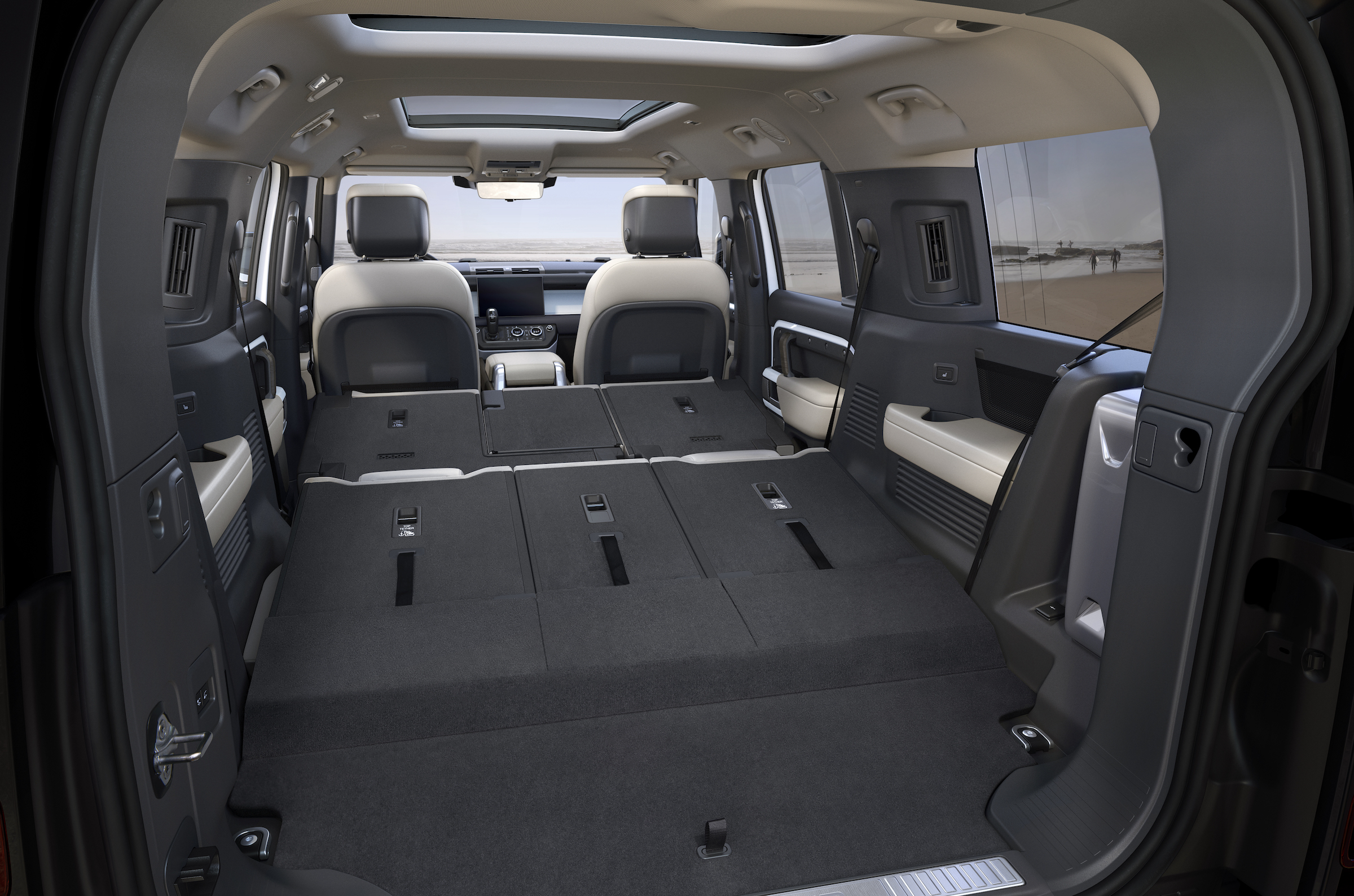
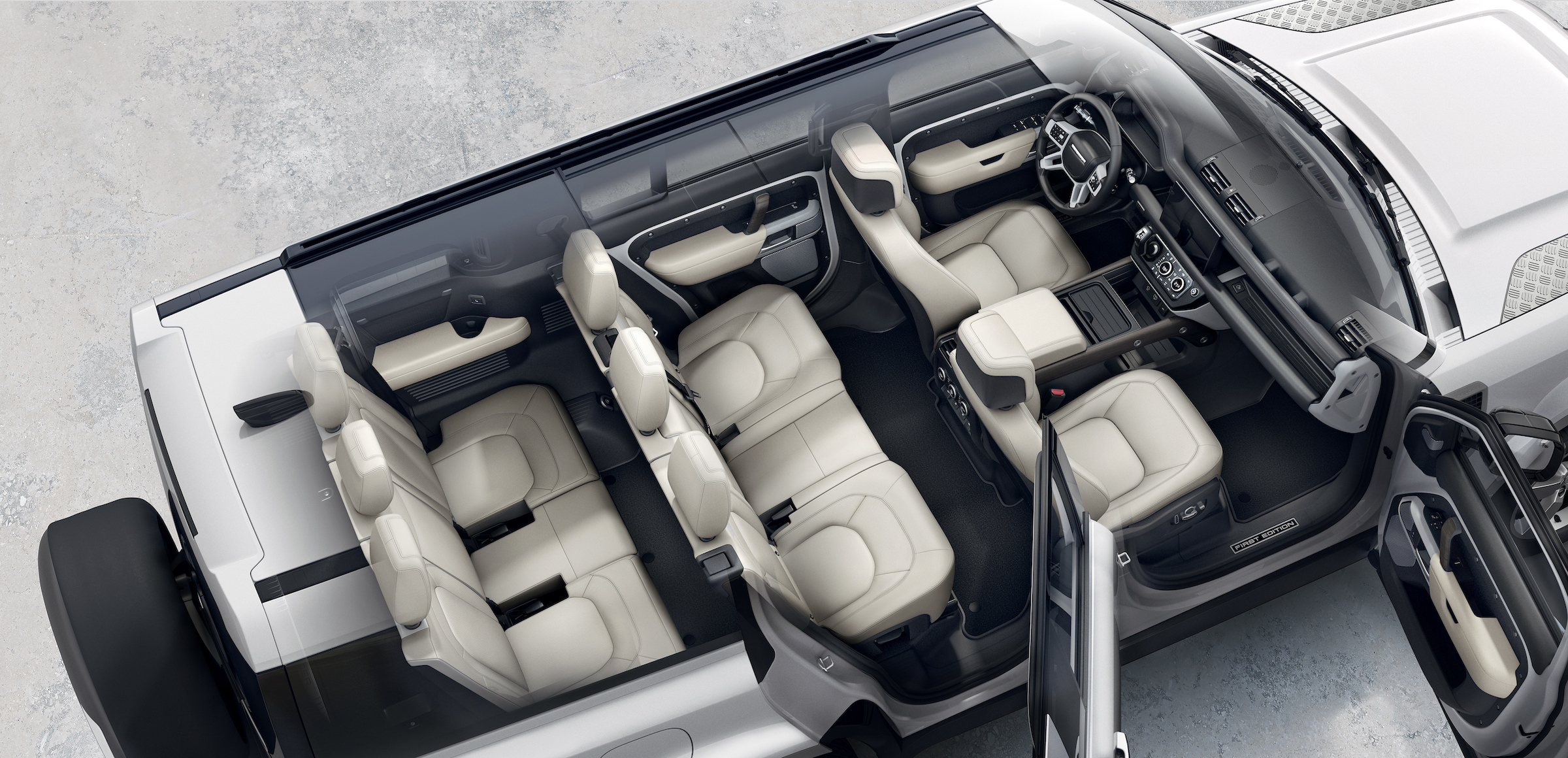
In terms of extra on-board tech, the Defender 130 gets a larger 11.4-inch Pivi Pro touchscreen, the navigation system now works with what3words to give directions in even the most remote environments, while a new cabin air purification plus system uses ‘nanoe X’ tech to remove allergens, pathogens and smells – a welcome feature whether you’re stuck in traffic or wading through a swamp.
There’s a decent choice of engines on offer, with P300 and P400 mild-hybrid six-pot petrol units, D250 and D300 straight-six diesels (the black pump still appealing when it comes to moving a big brick like the Defender any distance – even the D250 will get you to 60mph in 8.4sec), and Land Rover will no doubt feel compelled to drop a V8 in there at some point, just as it plans to for US buyers. A ZF eight-speed auto is standard.
This is the Defender that bigger families and excursion operators have been waiting for. Gaining valuable interior space and carrying capacity hopefully without losing any off-road ability proves Land Rover knows its adventurous audience well.
Read more
Future Classic: Land Rover Defender
9 classic 4x4s that aren’t Land Rovers
Driving the Kingsley KR Series, a restomod Range Rover


